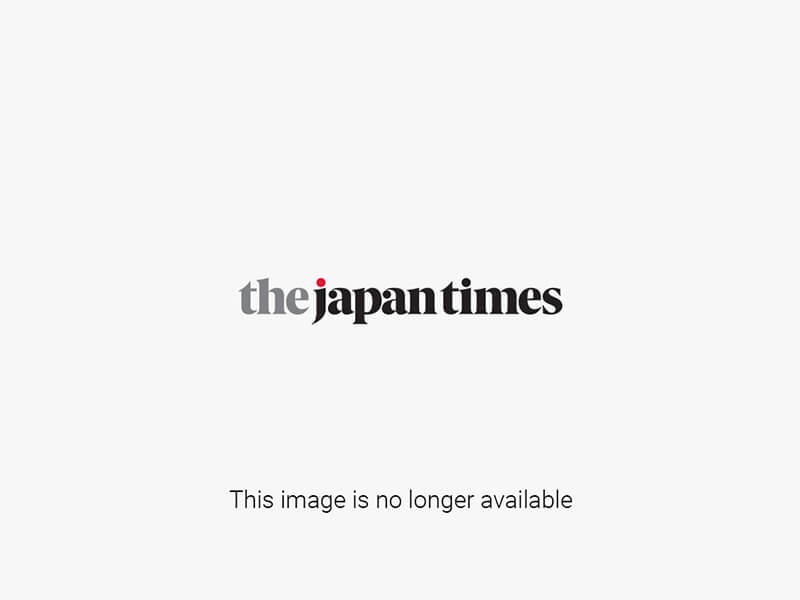Japan was rocked Monday by a powerful earthquake measuring a 7 on Japan’s shindo scale — the strongest rating — prompting tsunami warnings for the length of the country’s western coast.
Tsunami waves had already arrived in some areas following the strongest jolt, a magnitude 7.6 quake that struck near Ishikawa Prefecture’s Noto Peninsula at around 4:10 p.m.
At least six people were said to be trapped in collapsed buildings following the quake. Many houses collapsed in parts of Ishikawa, according to local governments and fire departments. Approximately 32,500 homes in the prefecture lost power.
A large-scale fire broke out in Wajima, Ishikawa, according to local governments and fire departments.
Injury figures were not immediately clear, but NHK reported that several people had been taken to hospitals in quake-hit areas.
A major tsunami warning — the highest level of alert — was issued for Ishikawa Prefecture’s Noto Peninsula, with the weather agency warning of waves of up to 5 meters in the area. Other areas of the Sea of Japan coast, from Hokkaido to Nagasaki, were under tsunami warnings or advisories, with waves of up to 3 meters forecast.
The tsunami warning for Ishikawa, Niigata, Toyama and Yamagata prefectures urged people to quickly leave coastal areas, with over 1.2 meter waves reaching the Noto Peninsula’s Wajima Port in Ishikawa at around 4:21 p.m., the agency said. NHK cautioned that waves may have been higher than this depending on the exact location.
A major tsunami warning had not been issued since the March 2011 Great East Japan Earthquake, the Meteorological Agency said.
The agency said areas that experienced strong shaking could see quakes of up to shindo 7 over the next week, especially in the next two to three days.
The major tsunami warning issued for the Noto Peninsula area was the top-level alert out of three warnings, and was equal to one issued after the March 2011 quake in the Tohoku region. Waves of over 1 meter are considered likely to make it difficult for people to stand, and such tsunami can be deadly, according to the weather agency.
Speaking to reporters in the evening, Prime Minister Fumio Kishida urged residents of the affected areas to “continue to pay close attention in case of strong earthquakes.”
“And in areas where tsunamis are expected, I would like to request that they evacuate as soon as possible,” he said in Tokyo.
The tsunami warnings were punctuated by several aftershocks across the Noto Peninsula following the largest initial quake, recorded as magnitude 7.6, according to the Meteorological Agency.
As of 5:30 p.m., agency data indicated that tremors measuring shindo 1 or higher occurred 19 times on Monday including shindo 7 main shock and five measuring strong 5.
Waves of 80 cm reached Toyama Prefecture at around 4:35 p.m and waves of 40 centimeters also reached the city of Kashiwazaki, in Niigata Prefecture, at 4:36 p.m. Kanazawa Port in Ishikawa experienced 40 cm waves at around 5:04 p.m., while waves were also reported in Yamagata Prefecture and Niigata’s Sado Island.
The tsunami was expected to reach Fukui, Hyogo, Hokkaido, Aomori, Akita, Kyoto and Tottori prefectures on the Sea of Japan side, as well as the Oki Islands, which are part of Shimane Prefecture.
Chief Cabinet Secretary Yoshimasa Hayashi told reporters at a news conference that no abnormalities had so far been reported from nuclear power plants across Japan. “We are still assessing human and physical damage,” he said.
Nuclear plant operator Tepco confirmed there had been no impact from the earthquake on its main power system or its Fukushima Nos. 1 and 2 nuclear power stations, according to a post by the company on its official X social media account. The Fukushima No. 1 nuclear power station has been out of use since it was damaged in the Great East Japan Earthquake and tsunami, on March 11, 2011.
Tepco added that it was continuing to check whether there had been any impact from Monday’s earthquake on its Kashiwazaki-Kariwa Nuclear Power Plant in Niigata Prefecture.
Horiku Electric Power, which operates Shika Nuclear Power Plant in Ishikawa Prefecture, confirmed in a news release that no abnormalities had been identified at the plant, currently shut down for inspections, but that it was continuing to confirm whether there had been any damage at the facility.
The quake was also felt in Tokyo and across the Kanto area.
Jordan Allen, a news editor at The Japan Times who is normally based in Tokyo, was in eastern Toyama Prefecture when the earthquake struck, spending New Year’s day with family.
After the first big earthquake hit, he remained seated in the living room gauging the situation for a moment before a second quake struck, with phone tsunami warnings and area alarms kicking in right after.
“I’ve lived in Japan for nine years and I’ve not felt anything like this before,” he said, adding that some drinking glasses and other items had fallen and broken around the home. He said he had not been able to confirm any serious damage in his immediate vicinity. He added that he had heard unconfirmed reports of traffic congestion in the city of Namerikawa, in Toyama Prefecture, as residents attempted to drive to higher ground in mountainous areas.
The magnitude of Monday’s quake matches that of the 1983 Sea of Japan earthquake, in which 104 people died and 324 were injured.
More information:
Staff writers Tomoko Otake, Jesse Johnson, Victoria Wilson and Daniel Traylor contributed to this report. Information from Kyodo added.

